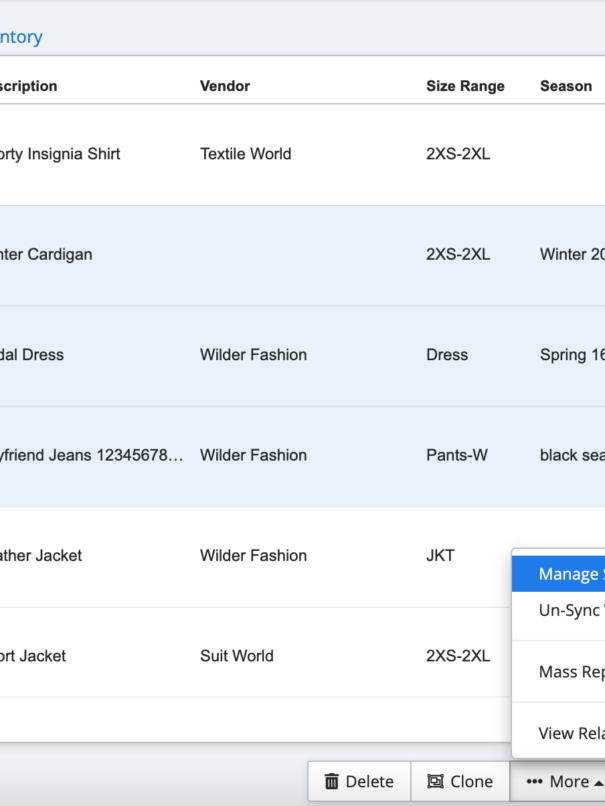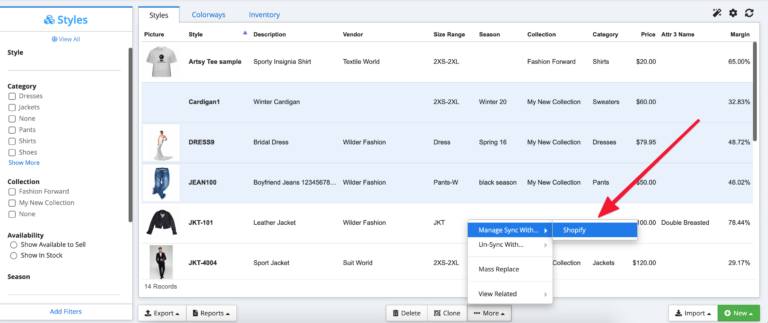Businesses use sales channels to reach potential customers and make sales. There are many types of offline and online sales channels, each with its own advantages and disadvantages.
But how to pick the best sales channels for your business? What are the different options and examples of sales channels you can choose from? Your individual business goals will ultimately determine the type of sales channel you choose, but making the right decisions will help you create a seamless customer experience and increase sales.
In this post, we’re providing an answer to the question “What are sales channels?”, sharing examples of sales channels, and providing guidance for developing an effective sales channel strategy.

Image by Freepik
What Are Sales Channels?
A sales channel is the route a company takes to reach its final customers so that it can sell them a product or service. While some businesses only use one sales channel, others employ a number of channels to market their goods and services to prospective clients. For instance, a business can devise a sales channel strategy to advertise its goods directly or through retailers, affiliates, dealers, or an in-house sales team.
Examples of Sales Channels
Here are 10 types of sales channels that companies use to sell their products and services, along with their key advantages and disadvantages:
1. Retail
The retail sales channel includes both permanent brick-and-mortar stores and pop-up retail stores (such as a stall at a local farmers market or a short-term rental in a mall).
Retail channels give you the chance to bypass middlemen and deliver products directly to your customers’ hands, fostering customer relationships and obtaining real-time feedback. However, owning a physical store entails additional costs like paying overhead and recruiting a sales force. In addition, you must be equipped to handle interpersonal issues with customers and employees.
2. Wholesale
Selling your goods with the wholesale model entails selling them to companies that will then retail those goods. It is a great way to move big amounts of inventory at once. Retailers will serve as your middlemen, and you can sell your goods by utilizing their marketing team and sales reps.
The main downside of starting a wholesale business is that it requires lots of capital to create enough inventory, and if that inventory doesn’t sell, storing it will incur additional costs.
3. Resellers
Anyone who adds value to a product and sells it for a higher price is a reseller. A product can be given more value by affiliating it with a well-known shop, having it repackaged, or even improving the product itself.
The main advantage of reselling is that it is very simple and the overhead cost is low, so virtually anyone can do it. On the other hand, resellers must comply with the original manufacturer’s terms about reselling and need to be prepared for inconsistent margins due to availability and price fluctuations of the items they are reselling.
4. eCommerce
Any online transaction is considered eCommerce. By 2025, the enormous $5 trillion eCommerce market is anticipated to account for 24.5% of all worldwide sales.
Starting an eCommerce store requires reduced startup costs, due to the absence of a physical storefront. You’ll be able to sell internationally around the clock, and you can easily gather customer data to help you determine what your target audience wants.
However, like all other sales channels, eCommerce does have some drawbacks, such as greater return rates due to the inability of customers to try things out before buying them and strained customer relations as a result of issues in your distribution network.
5. Traditional marketplaces
Traditional online marketplaces include Amazon, eBay, Etsy, and Google Shopping among others. While they already have a customer base, you are still forced to give up control over customer service and fulfillment times, and pay a commission on each transaction. Online marketplaces also may have very strict guidelines for how you engage with customers and represent your brand. Finally, it could be challenging to stand out because many other companies might be selling comparable goods at these stores.
6. Social media
Social media platforms like Facebook, Instagram, Pinterest, and TikTok are modern, content-driven marketplaces that enable commerce. One of the main reasons why they’re so successful as sales channels is because they allow you to meet shoppers where they already are.
Most social media networks offer helpful templates for your ads and business, as well as the option to track different metrics that can help you improve the reach and effectiveness of your postings. You can partner up with influencers and other brands to cross-promote and cross-sell your products. Another important advantage of this sales channel is that you can provide instantaneous customer service.
However, if you decide to sell via social media platforms, you will need to constantly create content in order to stay visible and make sure you’re prepared to handle trolls and negative feedback.
7. Mobile apps
In 2022, retail mobile commerce sales in the US reached $431 billion, and by 2025, it is expected that m-commerce sales will account for more than 10% of all retail sales in the country.
Selling through a mobile app is a great way to deliver coupons, special offers, or deals to your customers and stand apart from your competition. However, the cost of developing a mobile app can be significant, particularly if you want your app to work on all platforms. In addition, you should keep in mind that customers have high expectations when it comes to commerce apps and aren’t very forgiving of poor digital shopping experiences.
8. White label
White label goods are generic goods that are then customized by adding a brand’s name or logo, such as the branded reusable shopping bags and totes that are available at the checkout counters of every grocery store.
This sales channel has a lower production cost and lets you capitalize on current trends but the competition is high. This means that anyone can copy your idea and utilize similar designs and place them on subpar products, negatively affecting your reputation.
9. Direct-to-consumer
Direct-to-consumer (also known as business-to-consumer or just DTC) is a business model that involves selling goods directly to consumers, cutting out any middlemen like wholesalers or retailers. According to research, 55% of consumers would rather purchase products directly from brands than from retailers carrying multiple brands.
With the direct sales model, you get better consumer data from website traffic, which can help improve your lead generation and marketing efforts. There are also no limitations on how you present your brand or describe your products, and you get to keep all of the profits.
On the downside, with huge companies like Nike joining the fray, direct-to-consumer competition is at an all-time high, which means you’ll need to come up with effective tactics to gain a competitive advantage.
10. Business-to-business
When one business sells goods or services to another, this is known as a business-to-business (B2B) transaction. The market for B2B eCommerce is enormous. In fact, its size is double that of the B2C sector and by 2023, it is expected to reach $1.8 trillion in the US alone. For businesses, this offers a tremendous opportunity.
Still, the market can be quite limited, particularly if you have a really specific product that is only utilized by a few industries. In addition, customers might make more demands about anything from pricing to personalization, and you will frequently need to satisfy a set of buyers, which leads to a longer sales process.

Image by rawpixel on Freepik
How to Develop a Sales Channel Strategy?
As the sales field becomes more complex, having a solid sales channel strategy is playing a crucial role in business success. A sales channel strategy refers to a company’s plans and initiatives to market and sell its goods or services through sales channels.
Let’s examine some of the most common tactics and see how you might use them to develop a strong sales channel strategy and grow your company.
Consider your target customers
You must give careful consideration to your audience before coming up with a sales channel strategy that will benefit your company. Ask yourself: What are your customers’ needs or expectations? How do people typically use your products or services? Where do consumers expect to find your product or service?
Consider conducting a market analysis to obtain a better understanding of your customers’ behavior and gather information about their habits, consumption patterns, interest in your product, and familiarity with your brand.
Choose the right channels
When you first launched your company, you probably gave priority to a single sales channel (for instance, your online apparel store). However, if you want to expand your business, implementing strategies across several sales channels is essential.
In order to choose the most effective channels for your business, you must take into account where your target audience spends their time, which channels will require the least initial investment and the areas where your rivals appear to be succeeding the most.
Create a different strategy for each channel
Every new sales channel you add to your company will need a different strategy in order to be successful. For instance, sending customers to your online store would require a different strategy than driving foot traffic to a physical store.
In addition, you’ll need to adjust your marketing messaging and product descriptions across several platforms. For example, you may highlight quick shipping on your eCommerce website, but since Amazon buyers are accustomed to it, you’ll need to come up with something else to encourage them to make a purchase.
Manage your sales channels in one place
Effective channel management is crucial when you sell your products on multiple sales channels. The best way to achieve this is by using a single system where all inventory information and customer journey data can be gathered like ApparelMagic, an ERP solution specially developed for companies in the fashion sector.
Manage inventory and fulfillment
As you diversify your sales channels, you must have the right procedures in place for inventory management and order fulfillment. The more avenues you have to make sales, the more sales you’ll hopefully make overall. When this happens, you need to have enough inventory to handle the growth.
Additionally, you must make sure that you have the ability to complete all of those orders. If you are no longer able to self-fulfill, consider outsourced fulfillment, in which order fulfillment is handled by a third-party logistics provider (3PL). You can also have fulfillment options and requirements that are store-specific (for instance, with FBA, Amazon stores your inventory and fulfills orders on your behalf).
Ensure good quality customer service across all sales channels
As your company grows, you will probably have to deal with more customer complaints, which is why you need to find ways to ensure high-quality customer service and support.
Think about hiring customer support representatives or adding live chat to your website. As your company grows, this may be a manageable way for you to handle customer care inquiries and grievances. Keep the app open on your phone or work computer so you can respond to messages right away.
Evaluate your sales channel strategy and adjust
It goes without saying that some sales channels will work for your company while others won’t. It is crucial that you assess each channel’s success in order to ensure that your channel sales strategy is effective.
Pay attention to the volume of sales that each channel generates. If you find a sales channel that is not generating enough sales, create a marketing campaign specifically targeted at that channel. Maybe all you need is a little more brand recognition so that your customers are aware of all your sales channels.
The Bottom Line
Sales channel choices will undoubtedly affect your sales success. Which one works best for you will depend on who your target market is, what type of product you are selling, and how much money you are willing to spend reaching your potential customers.
When creating your sales channel strategy, you must base your decisions on facts and metrics after carefully examining all available options. Remember that customer experience should be at the center of your strategic business decisions. Creating a seamless, multichannel consumer journey will have a great influence on your brand perception and most importantly, your conversion rates.







